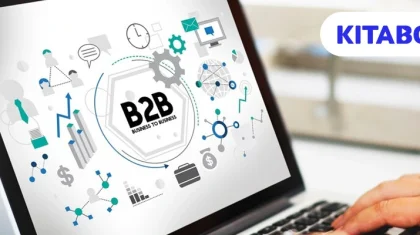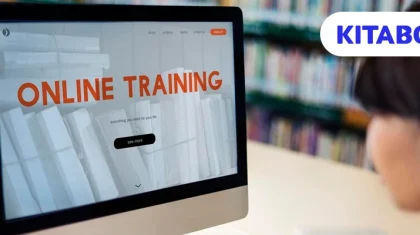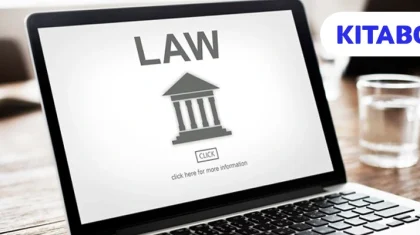
The Benefits of Open Access Textbooks: A Game Changer for Students
Gone are the days of hefty textbook fees and limited resources. In this digital era, learning is limitless, accessible, and free. Learners are now switching to digital learning resources that aren’t just pages of information; they’re interactive and filled with multimedia, simulations, and links to deepen their understanding.
Such resources, also known as Open Access Textbooks, are available extensively for teaching and learning purposes. These resources come in a downloadable form that can be saved, copied, and shared by anyone who gains access to them.
Digital textbook platforms like KITABOO, offer a cloud-based solution for distributing interactive, mobile-ready ebooks and Open Access Textbooks. This modern approach to education is not just about accessing information; it’s about engaging with content in ways that traditional textbooks never allowed.
Table of Contents:
- What Do Open Access Textbooks Refer To?
- 6 Game-Changing Ways Open Access Textbooks Transform Learning Initiatives
- Encouraging Constant Engagement and Communication
- Empowering Educational Institutions with Exceptional Resources
- Advancing Knowledge with Free, Shareable Textbook Access
- Elevating Academic Quality Through Open Access Materials
- Embracing a Global Perspective in Educational Resources
- Promoting Lifelong Learning Through Easily Accessible Textbooks
What Do Open Access Textbooks Refer To?
Open access textbooks are resources that play a pivotal role in advancing student learning by ensuring the availability and affordability of educational content. A broader community of learners and educators has free access to these resources.
Further, this student resource can be reused, remixed, and redistributed so that learners can customize the content according to courses and curriculum. Educators use open access textbooks to assemble information, cater to instructional needs, modify curriculum, design a learning path, and frame innovative assessment strategies based on this extensive resource.
Open access to textbooks empowers both learners and educators with free and flexible availability and control of resources. This way, the stakeholders are allowed to create, collaborate, and utilize these resources to enhance their learning.
Furthermore, open access textbooks recognize the relevance of sociocultural learning theories, the influence of global experiences, and the diverse needs of learners.
6 Game-Changing Ways Open Access Textbooks Transform Learning Initiatives
Open Access Textbooks promote research, transformation in pedagogical methodologies, and advanced learning for students.
According to research, in the United States, 1700 courses are based on university-based projects and open access resources in top-notch institutes such as MIT, Rice University, Johns Hopkins Bloomberg School of Public Health, etc. It is a new phenomenon that has propagated openness in education.
Here are six key ways in which open access textbooks are revolutionizing learning initiatives:
1. Encouraging Constant Engagement and Communication
If you have ever heard of the term ‘participative web’, you would understand how open access textbooks profusely encourage that. These resources are intelligent web services that empower users to develop, obtain, collaborate, and distribute user-created academic content, media, and creative works.
Students have easy access to coursework online, and the best part is that they can share it with their peers, brainstorm solutions, participate in valuable critical reasoning and decision-making, and ultimately enhance learning and problem-solving techniques.
2. Empowering Educational Institutions with Exceptional Resources
Besides using Open Access Textbooks to gain a competitive edge and attract students, educational institutes use this resource to improve teaching methodology, curriculum formation, assessment strategy, and launch e-learning alternatives.
Open sharing of academic content can enhance publicity and organizational reputation and offer students the pleasure of sharing with peers.
3. Advancing Knowledge with Free, Shareable Textbook Access
The free availability of educational resources that offer free sharing means broader and faster dissemination. Considering sustainability issues with traditional resources, open-access textbooks revolve around cost-benefit models and allow a consistent flow of intellectual capital.
These resources further bring down learning costs for students and encourage them to access online materials free of charge.
The motivation to access and share Open Access Textbooks can be commercial, altruistic, or community-supportive, but these resources simulate learning, improvement, innovation, and reuse at the individual, institute, and government levels.
4. Elevating Academic Quality Through Open Access Materials
There are a plethora of researchers and scholars who share their wealth of knowledge online, which in turn means rapid quality improvement and faster technical and scientific development.
This decentralized development eventually enhances quality, stability, and security and reinforces societal development, diminishing social inequality.
In this transformative arena, digital textbook platforms like KITABOO play a pivotal role. It provides a structured environment for educators, researchers, and learners to engage with high-quality content, fostering a continuous cycle of improvement and innovation.
5. Embracing a Global Perspective in Educational Resources
Increased globalization of education encourages competition and a rising supply of free educational resources on the Internet. Open Access Textbooks are not limited to geography or industry but cater to all kinds of business models, market scenarios, and global learning platforms.
These resources help learners, and teachers gain access to the best possible global resources using flexible materials with no restrictions on developing countries or disadvantaged communities.
6. Promoting Lifelong Learning Through Easily Accessible Textbooks
New and improved technologies foster the creation, accessibility, and distribution of content using simple software and broadband availability.
Organizations have seized the opportunity to use open access textbooks as a way to promote lifelong learning and encourage holistic participation in higher education. This approach encourages the exchange of ideas, sparks the creation of innovative projects, and establishes a dynamic learning environment where collaboration thrives.
Conclusion
Understanding the evolving landscape of free learning resources, exemplified by Open Access Textbooks, may be challenging. However, as technologies transform and advance, these resources have become indispensable in laying the educational foundation for students transitioning from traditional economic and educational paradigms to a growing cultural and economic reality.
The digital textbook platform KITABOO is a cloud-based, end-to-end solution that helps you explore new opportunities with interactive content. With the help of this platform, you can seamlessly embrace a future-oriented approach to education, boosting engagement, collaboration, and personalized learning experiences.
Write to us at contact@kitaboo.com for more info!
Discover how a mobile-first training platform can help your organization.
Kitaboo is a cloud-based platform to create, deliver & track mobile-first interactive training content.


